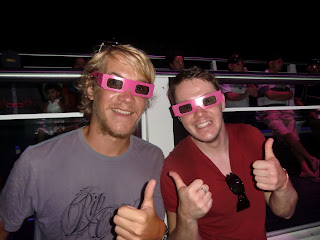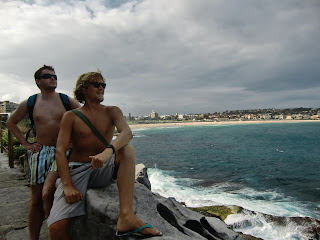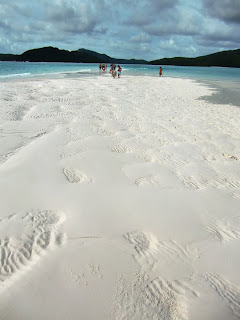We flew over incredible Fiordland on our flight from Sydney and landed in Christchurch: a city slowly on the mend. There was little visible evidence of quake damage on the way from the airport through the Christchurch suburbs, but as we reached the centre it was a different story.
The first earthquake struck on September 4, 2010, and was a 7.1 magnitude quake that hit 25 miles west of Christchurch. It was, without question, a devastating earthquake, but it was the 6.3 magnitude aftershock that hit on February 22, 2011, which was the real monster. The February quake was centered just six miles south-east of Christchurch and resulted in significant property destruction, particularly in the city’s Central Business District.
As well as horizontal movement, the quake rose directly upward with more power, giving an almighty thump to the surrounding area with unimaginable force. Liquefaction produced 400,000 tonnes of silt, 4,000 buildings in the four avenues of the city centre had to be demolished, nearly 10,000 homes needed to be bulldozed and 185 lives were lost, making it New Zealand's second-deadliest natural disaster on record. It was this quake that changed life forever in Christchurch.
We arrived at our hostel (one of the few surviving ones) and received a map of the city. The helpful man at reception then took a red pen and drew a large block over the city, and scribbled it out. The red zone.
After nearly 12 months, the CBD is still on lock down. The only thing to do was walk and see it for ourselves. I don't know about you, but I've never seen the impact of such a recent natural disaster - it was a unique and unsettling opportunity that left us with few words.
 As we began to walk, we are quickly rebuffed by 'danger, keep out' signs, chain-link fences, barricaded streets and construction bulldozers pushing around rubble. It was no mans land, apart from the brave demolition teams. It felt like it had just happened yesterday.
As we began to walk, we are quickly rebuffed by 'danger, keep out' signs, chain-link fences, barricaded streets and construction bulldozers pushing around rubble. It was no mans land, apart from the brave demolition teams. It felt like it had just happened yesterday.
Just beyond the red zone perimeter we could see collapsed buildings, shattered glass and mundane items such as plastic chairs strewn on cracked pavements. We stood, wide-eyed, surveying the scene: half-collapsed shops still holding stock in the foreground and the ominous leaning towers in the background.

Missing from the scene is the Canterbury Television (CTV) building, which collapsed, caught fire and killed 115 of the 185 people who lost their lives. The finger of blame is still being pointed as a known weakness in its structure was not rechecked after the September 2010 earthquake, and now reports emerge that it failed to meet with modern standards for infrastructure in earthquake areas. I can't imagine how this must feel for the families who lost people inside the tower.
We had to zigzag around the edge of no man's land, walking past graffitied signs on every door saying things like 'UK team, CLEAR. 26/2'. First they went in to check for survivors, fires and gas leaks. Then they lift shaft team went to work to check for trapped people in multi-storey buildings. Now they're still stabilising, demolishing and clearing, a year on. And according to someone we spoke to who friend works for minimum wage in the red zone, still finding dead pets, body parts and mouldy food.

Among other buildings outside the main CBD, the Cathedral of the Blessed Sacrament was also severely damaged, with the towers falling. A decision was made to remove the dome because the supporting structure was weakened, and now the building is held up with a combination of hay bails and storage containers while they work out what to do with it. One of the rooms at the front of the building is mostly missing, but a suspended, open safe is still visible. Empty, like the rest of this holy structure.
It was soon 5pm, and the city was empty of workers on their way home. There was no clipping of polished high heels, loosening of ties and cheery colleagues heading for after-work drinks. There were just a few tourists, like us, looking in dismay at the rubble. It’s as if the heart of the city has been removed.
However, among the wreckage there are green buds of hope and renewal. While trying to find some life, we stumbled upon a shopping area that has opened in an ingenious set of shipping containers, re-engineered as temporary shops. Right here, where buildings collapsed and number of people were crushed to death by falling debris, a new life has grown from the rubble.
As the months go by, the red zone is steadily shrinking, and will eventually be replaced by a proposed new city centre. We saw signs everywhere for volunteers to help 'Green the rubble' by planting flowers and shrubs.
Despite the enormous loss, the looming presence of the red zone and continued legal thrashings, the people of Christchurch have remained loyal to their city and are working together to bring about Christchurch’s rebirth. The shrines of sympathy and charitable messages have gone, and been replaced with a positive, united effort to return the city to a place full of spirit, life and opportunity.

























 As we approached, the faint, white peaks of Mount Cook (3,754m) and Mount Tasman (3,497m) popped into view in the distance. We skirted Lake Pukaki, a brilliantly blue lake at the foot of the mountain range and crept closer to the snow-capped wonders.
As we approached, the faint, white peaks of Mount Cook (3,754m) and Mount Tasman (3,497m) popped into view in the distance. We skirted Lake Pukaki, a brilliantly blue lake at the foot of the mountain range and crept closer to the snow-capped wonders.

































 This is where the Great Barrier Reef starts, although noone can completely agree on this - some say the Great Barrier Reef is bigger than the whole of the United Kingdom. It consists of some 3,000 separate reefs, over 600 islands, at least 1,500 species of fish and 400 types of coral (and counting).
This is where the Great Barrier Reef starts, although noone can completely agree on this - some say the Great Barrier Reef is bigger than the whole of the United Kingdom. It consists of some 3,000 separate reefs, over 600 islands, at least 1,500 species of fish and 400 types of coral (and counting).


 We had swam in the sea all around Australia and there's always the chance you can get stung, and not just by any ordinary jelly fish. Blue bottles (the Portuguese man-of-war) and the box jellyfish sting can be deadly (to name just two), and the Whitsundays also had some they call 'Snotties' which, yes, could be mistaken for a giant's bogey underwater. But here they were rife and we were all more than happy to wear the suit - plus it saved us wearing suncream which harms the coral and fish.
We had swam in the sea all around Australia and there's always the chance you can get stung, and not just by any ordinary jelly fish. Blue bottles (the Portuguese man-of-war) and the box jellyfish sting can be deadly (to name just two), and the Whitsundays also had some they call 'Snotties' which, yes, could be mistaken for a giant's bogey underwater. But here they were rife and we were all more than happy to wear the suit - plus it saved us wearing suncream which harms the coral and fish.


